Often the biggest challenge after a new carpet installation is what to do with the leftover carpet scraps. There are many environmentally-friendly options for the both the used and new carpet scraps including recycling, donating, or re-purposing. Here are 7 of our favourite things to do with leftover carpet.
1. Turn it into a walk off mat
If you have large cuts of new carpet leftover at the end of the job, the best use for them is to turn them into a walk-off mat. The mats will create a cohesive look in your home or can be put over the existing carpet to keep it looking good in high traffic entrance areas. To avoid fraying edges from DIY cutting, bring it in to Mira to have the edges professionally bound.
2. Muffle noisy washer or dryer
Quiet down washer and dryers that shake and rattle by putting a leftover piece of carpet under it to help muffle the noise of the machine moving against the floor.
3. Use it as knee pads
Small scraps of carpet make great knee pads for gardening, solo canoeing, or to store in the trunk for changing a flat tire.
4. Move heavy furniture
Put leftover pieces under the feet of heavy furniture and appliances to protect floors from scratches.
5. Make a carpet pet house
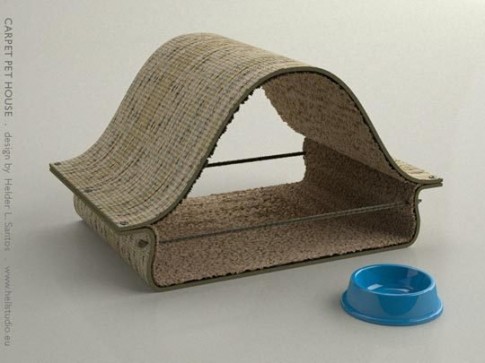
Smaller pieces of carpet can be re-purposed into this innovative pet house. This simple DIY project only has two steps once the carpet has been cut down to size. Instructions are can be found here: http://www.amplesample.net/site/library/img/winners08/CarpetPetHouse.pdf
6. Recycle it
Carpet recycling is the best option for large quantities of leftover used carpet. By choosing to recycle the carpet instead of taking it to the landfill, the carpet fibres can be used to create new carpet or other products that use polypropylene and nylon such as bearings, plastic pipes, and patio furniture. MIRA Floors offers free carpet recycling for all our residential customers. Learn more about the carpet recycling process on our carpet recycling page.
7. Take on a carpet furniture making project
Get inspired by past winners of Ample Sample, an annual contest showcasing innovative ways of re-using the thousands of carpet tile samples leftover each year. Projects vary in difficulty and number of carpet tiles needed.
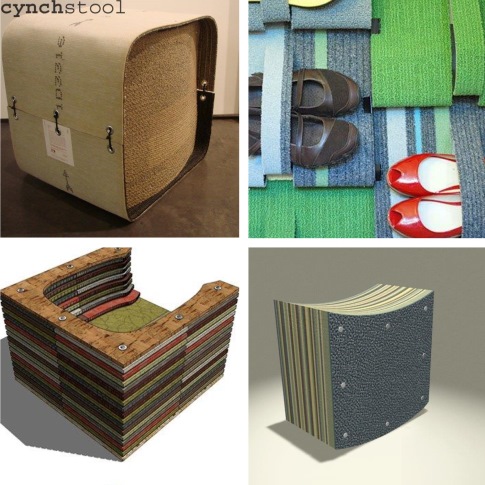
Posted on Aug 29 2013 12:16 pm by Kelsey Shipley
|
category: Carpet Flooring |
Leave a comment
Carpet is manufactured by sewing strands of yarn into a backing, creating thousands of yarn loops. What happens to the loops of yarn defines the style of carpet created. When yarn loops are cut, the tufted yarn stands up straight, creating a cut pile carpet. When the loops are uncut, the carpet is called a loop carpet. These two options can be combined to create many carpet style possibilities.
 Level loop carpet
Level loop carpet
As the name suggests, level loop carpets are made up of thousands of yarn loops of similar heights. The level loops create a smooth and durable surface well-suited to high traffic areas.

 Multi-level loops carpet
Multi-level loops carpet
Multi-level loop carpets are created by combining a variety of loop heights. The results are carpets with unique patterns and textures. Multi-level loop and level loop carpets are also commonly referred to as berber carpets.

 Cut and loop carpet
Cut and loop carpet
Cut and loop carpets are combination of cut pile and loop pile that creates a sculpted design that gives visual impact to any room. These carpets can create a variety of patterns from a simple pin dot to larger floral or geometric patterns. The texture helps hide soil and stands up well to active households.

 Frieze carpet
Frieze carpet
Pronounced frih-zay’, this carpet is known by many names including twist and shag. Yarn of frieze carpets is heat twisted very tightly so it curls once it has been cut, giving frieze carpets that bouncy texture they are well-known for.

Plush cut pile carpet
Plush carpets are a type of cut pile carpets with a soft, smooth, and dense cut pile. They have a smooth and flawless appearance that gives a space a traditional and luxurious look.

Textured cut pile carpet
A textured cut pile carpet is the classic residential carpet, suitable for mid to high traffic areas. It differs from its cousin, the plush, by having more visible yarn ends. This results in a slightly more textured looking surface that reduces the crushing and traffic marks commonly found on plush carpets.

Posted on Jul 5 2013 2:52 pm by Kelsey Shipley
|
category: Carpet Flooring Flooring Guides |
2 Comments
Carpet tiles were introduced to the market over 60 years ago but their popularity has rapidly grown during the past decade. Modular carpet tiles are becoming the soft surface of choice for offices, retail spaces, hospitality, and even apartment buildings. They are even popping up in residential spaces that want something more unique than the traditional wall-to-wall carpet look. Here are three reasons why we love using carpet tiles.
Endless unique design possibilities
With many offices moving away from cubicle farm layouts and embracing open spaces, designers are given larger areas to work with. Open spaces give them a chance to be more creative and try elaborate large scale designs like these new hexagon tiles from Shaw Contract.
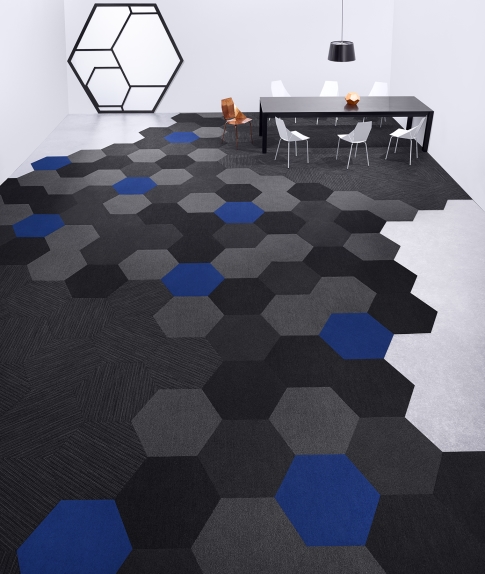
Bold statements can be made using a combination of different tiles. These bright tiles can be used to add punches of colour to a pattern or many different colours can be put together to create your own pattern.
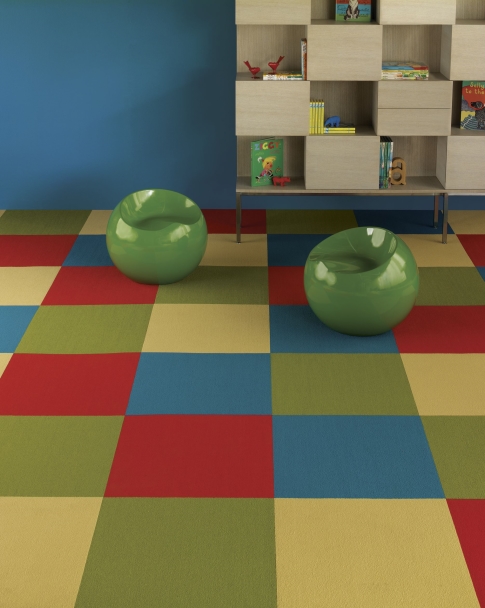
Using different installation methods can create an entirely different looking carpet for some patterned carpets. Each of the different installation methods below creates a different look for one style of carpet tile.
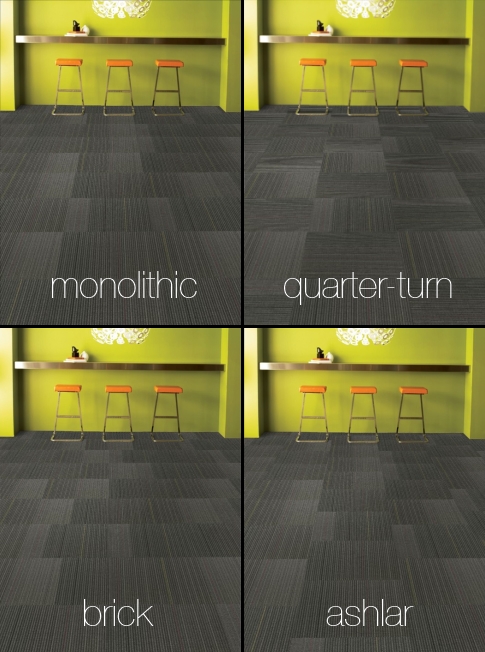
The versatility of carpet tiles allows customers to have a custom looking carpet without the cost of ordering a custom made product.
Simple to replace damaged areas
When carpet is stained or damaged, modular tiles are easier to replace than broadloom carpet. When doing a repair for broadloom carpet, a whole roll of broadloom carpet needs to be dragged down from storage, cut and seamed in. With carpet tiles repairs are much easier. Simply remove the damaged tile and put a new one back in. Wear patterns can be minimized by replacing and rotating select tiles rather than replacing the entire floor when broadloom carpet wears out.
Easier transportation and storage
12 foot rolls of carpet and a highrise elevator are not an ideal match. On installation day, it is much quicker and easier for our crews to move boxes of carpet tile instead of bulky broadloom rolls. Businesses that choose to buy extra materials to keep for repairs use less space to store a 2′ x 2′ box of carpet tiles than a 12 foot long roll of carpet.
Posted on Jun 12 2013 1:40 pm by Kelsey Shipley
|
category: Carpet Flooring |
2 Comments
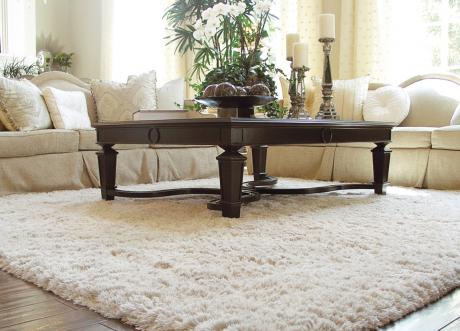
As the popularity of mid-century modern design has grown (think of the set of Mad Men), so has the popularity of shag carpet. For many, the mere mention of shag carpet brings up nightmares of wood panels, avocado green appliances, and plastic furniture. But the shag carpet of today is much different than its stringy, burnt orange cousin of the 1970’s.
It’s not just the dated colours of seventies shag carpet that make homeowners want to tear it out of their homes on sight, it’s the quality of the fibres. That harvest gold shag carpet found CMHC specials is heavily matted in all the walking paths. Carpet fibre technology has dramatically advanced since then and today’s shag carpet shows footprints less than the seventies version.
In most carpet stores, this new generation of shag is often referred to as “frieze.” The new name helps shag carpet shed its image as a style nightmare. Emily Morrow, Director of Colour, Style, and Design at Shaw Industries explains that “the simplicity and contemporary lines of the style appeal to a generation of new consumers and homeowners who did not live through the trend in its original heyday but like the nostalgic effect it offers.”
Like the look but aren’t ready to make the commitment of wall-to-wall shag carpet? An area rug is a great way to incorporate this style into your home. Broadloom carpet from any manufacturer can be cut and bound into an area rug, giving you an endless array of colours and styles to choose from.
Still skeptical about shag carpet looking good in your home? Take a look at Houzz’s shag carpet ideabook to see how shag carpet is incorporated into a variety of decor styles.
What do you think? Would you include shag carpet in your next home redecoration or is this a piece of history that shouldn’t be repeated?
Posted on May 30 2013 12:01 pm by Kelsey Shipley
|
category: Carpet Flooring |
Leave a comment
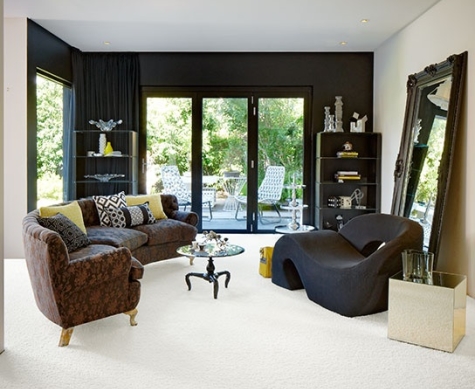
Wool is the highest standard of fibre. It is the fibre all other synthetic fibres are trying to imitate. We prize Merino (from merino sheep) and cashmere (from goats) wools for our clothes. Why not consider it for your carpet?
Here are the top three reasons to choose a wool carpet:
1. Naturally resistant to soil and dirt
This is often the number one reason to buy wool carpet for many customers. The fibre structure of wool has overlapping scales, similar to roof shingles. These scales keep the dust and dirt near the surface of the carpet and prevent it from reaching the inner pile. Since the wool fibres have kept the dirt and grime at the surface, wool carpets experience significantly better soil release when vacuuming than their synthetic carpet cousins.
2. Appearance retention
Flattened pile can occur after only a couple years with cheap synthetic carpet and cause the floor look worn out before its time. With wool’s natural elasticity, flattened pile is not an issue. Each wool fibre has a three dimensional spiralling crimp that can stretch to more than 30% of its original length and bounce back like a mini spring. Wool is a crushproof choice that quickly recovers from daily traffic and even furniture indentations.
3. Naturally stain resistant
Wool fibres have a thin protective membrane that gives wool the ability to shed water instead of immediately absorbing the liquid into the fibre. Since 80% of carpet stains are water based, this membrane is an important contributor to the natural stain resistance of wool carpets.
This wonder carpet is generally associated with a high price tag, but it is actually more in reach than expected. Like a cashmere sweater, purchasing a wool carpet is a long lasting investment. The wool carpet looks great longer and has to be replaced less often than synthetic carpets. By investing more money in a timeless wool carpet, there are savings in future material and installation replacement costs. The benefits offered by wool carpet can be of greater value for your lifestyle. For wool, both the luxury and value are worth the price. Feel a couple samples of wool carpet and we dare you to not fall in love with this amazing fibre!
Posted on Apr 26 2013 3:50 pm by Kelsey Shipley
|
category: Carpet Flooring |
Leave a comment



 Level loop carpet
Level loop carpet
 Multi-level loops carpet
Multi-level loops carpet
 Cut and loop carpet
Cut and loop carpet
 Frieze carpet
Frieze carpet






